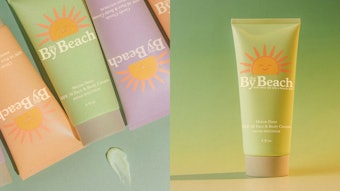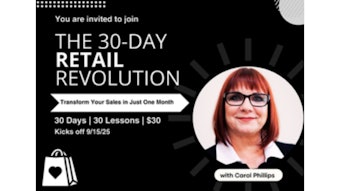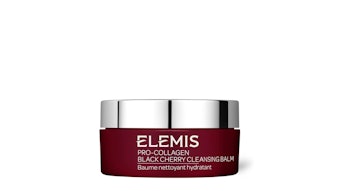Increase your sales through high-profit retailing by targeting the most desirable clientele. Learn how to entice these clients—the reschedulers and consistent buyers—to purchase your products, treatments and services.
With any spa business, it is crucial to attract consumers who are seeking the services you offer and have the income to support frequent patronage. Marketing efforts not only should include maintaining existing clients, but also targeting untapped potential consumer groups that show promise and revenue potential. Some of these include baby boomers, Generation X’ers, mothers-to-be, upscale suburban caretakers, the socially affluent, ’tweens, and young, single, urban, multiethnic professionals in your area.
Targeted clientele
Skin care clients today are more independent and seek control over their skin health, often approaching industry professionals with broader demands, due to a deeper knowledge of skin care products and treatments. Marketing intelligence indicates that scientific advances are impacting the esthetic industry and recasting the professional role of the service provider into that of a knowledge worker.
No longer can estheticians play by the rules of the retail game. Self-reliant and highly self-educated clients must be handled differently, thus requiring a fundamental alteration in the way in which merchandising is approached. Today’s profitable retailers are successful because they forge mutually beneficial partnerships with clients. When products are increasingly accessible on the Internet with the click of a mouse, spa professionals must be well versed in new technologies and synergies that generate substantial sales increases.
The potential to buy
Practitioners have the potential to influence spa spending, but first must get inside the client’s mind. Very few sales have anything to do with the professional’s trade experience or performance. Clients no longer want to be told what to do—they want advice from experts and to be presented with sensible choices. They seek education about new products or treatment options as better alternatives to what already exists. Successful retailers don’t just sell what is available, but prepare clients for the next trend. Always pique a client’s interest without allowing them to know everything.
To reach the minds of the preferred target clientele, create a psychological connection to get consumers to make a purchase. To do this, make products and treatments appear as the objects of the client’s own goals and desires. The intention is to get the client involvedby encouraging self-directed behavior—self-modification for personal adjustment. Remember that a client’s income level has a lot to do with their willingness to spend money in an establishment, as well as the frequency. Clients who have overstretched their budgets or who are mired in money crunches—although loyal—should not be the focus of high-profit retailing strategies.
Sell without the sales pitch
Utilizing merchandising techniques to get the most bang for your retailing buck can be achieved in a number of ways. Following are some tips for enhancing product displays, selling methods and marketing efforts.
Merchandise with winning displays. Retail products should be displayed so that they silently call out to browsing clients and potential buyers, with no barrier in between. Items should be clearly visible and easily handled. Place shelves at waist to eye level, which has been proven to boost retail sales. When managing merchandise, research thoroughly how other suppliers promote their product lines. Three key things to remember when updating current retail displays include intelligent selection, style and simplicity. It’s never a waste of time to put the extra effort into making displays more eye-catching.
Let light make the difference. Lighting gives texture and depth, strengthens the color of packaging, and is the most effective way to showcase retail items by adding energy and life to otherwise drab or dark display spaces. When selecting or replacing lighting systems, keep in mind the levels of brightness, the color of light and the ability of the light source to render color naturally. To add interest, work with a mixture of fluorescent, incandescent or halogen bulbs. In addition, consider consulting a lighting specialist.
Make a colorful impact. Color is a major consideration because it affects clients’ buying moods. Color arrangements of blues, grays, greens and blacks suggest refinement and provide a better backdrop for more expensive retail items. Bright, high-impact colors, including red and yellow, stimulate impulse buying and are best used to create displays for marked-down items and other less expensive sale merchandise. Interior signs should be straightforward and easy to read, look professional and up-to-date, and communicate the theme and décor of the spa. Make sure to remain tasteful—color should never overpower the merchandise.
Keep pricing appropriate. Determining product prices will depend on various aspects of your target market and operational costs—such as facility rent or mortgage, team members’ salaries, wholesale charges for retail items, shipping and taxes, and other fixed costs. When establishing retail prices, these fees must be subtracted from the expected revenue to calculate the profit margin. A “break-even” point offers an estimate of the total amount of products and services that must be sold at both high and low prices each month in order to cover the spa’s expenses. Clues for pricing individual lines, as well as fees for treatments and other rates, can be researched by studying price structures on related Web sites. Contacting businesses outside your region is another good way to gather information about fees and rates, and establish a basis for your fee structure.
Establish an inventory ordering system. The best way to avoid costly and unnecessary inventory expenditures is to track user status closely. Ordering products should be based on the rate of sale and the length of time between inventory counts. These checks can take place once a month, every week or even daily. Reorders for specific merchandise will depend on how quickly it takes, under normal conditions, to receive items from the manufacturer, as well as the amount of reserve stock necessary. Creating “never-out” lists ensures that staple merchandise will be on hand at all times. Most importantly, creating a solid compensation plan for slow sales periods, slow deliveries and inventory errors is essential and must be securely in place. Carefully research delivery times, guarantees and customer support before choosing a supplier.
Provide cutting-edge salesmanship. Successful salesmanship requires the appearance of remaining on the cutting edge—continually looking for revolutionary, clinically proven breakthroughs in skin repair or the use of essential nutrients that impact cellular activity. Clients look for spa professionals who possess an extensive understanding of the spa market. Higher revenues can be achieved by focusing on assisting clients to maintain their skin, and framing the purchase of products and treatments as being an investment. Remind clients of how much they already have contributed to the care of their complexions, and encourage them to remain diligent, so as not to diminish the results already achieved. When making a sales pitch, think in terms of providing information rather than selling.
Manage promotions effectively. Delegate the tasks of creating visual displays, attracting potential buyers, managing stock and handling cash at point-of-sale to outgoing personality types. Retail managers should have an outstanding sales record, exhibit a flair for displaying merchandise and be accountable for uncovering new trends. A professional with this type of background is an excellent candidate for handling creative promotions, based on their in-depth research.
Adopt tight security measures. Well-planned precautionary measures will help protect your merchandise and retail revenues. Ensure that security measures have been established for monitoring all facets of the operation. This can be accomplished with either computer software or carefully scrutinized inventory paperwork. Choose an individual who is capable of maintaining a system that tracks the rotation and loss of merchandise. The demands of this position require integrity, loyalty and problem-solving abilities, as well as an extensive history in retail-management services. Look for professionals with a strong accounting background and basic record keeping experience.
It’s all about positioning
Be sure to review periodically how you’re presenting merchandise and products to your clientele. By understanding the principles behind high-profit retailing and adopting these techniques, you can establish your spa as a leading authority and increase your retail bottom line.










